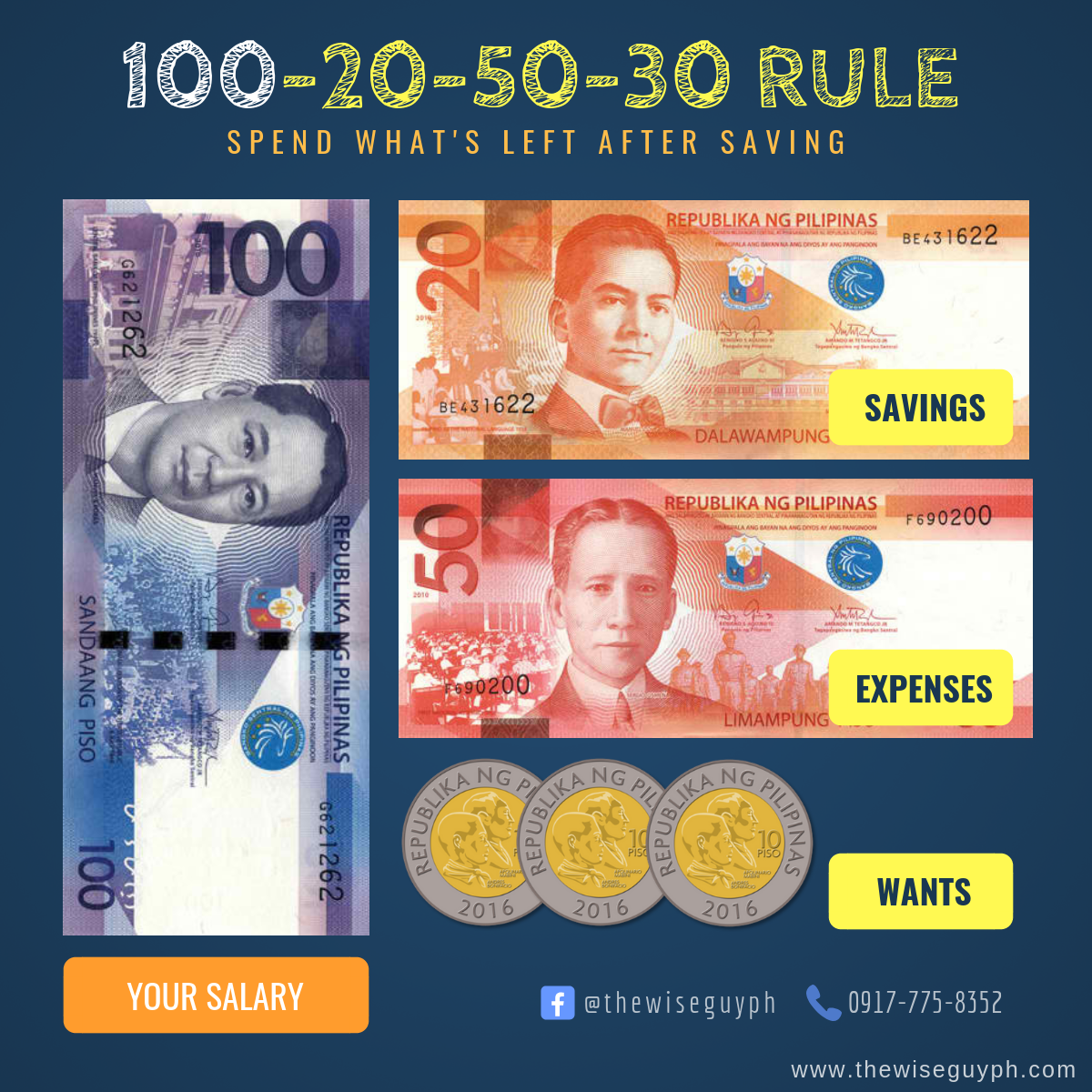
In a nutshell, an emergency fund is the amount of money you need to cover unforeseen personal expenses. You might be confused, but this is a different fund aside from your usual savings, investments, or even from your insurance plans. Just like the purpose of your savings may be for purchasing a new house, your investments to speed up your wealth accumulation, and your insurance to protect your family from going hungry when you are taken out of the picture.
But before you start saving, investing, or even purchasing a life insurance plan, you must first secure your emergency fund. If you are interested to know the reason behind it, then you may read it on the link below.
READ: 5 Simple Steps to Achieve Financial Freedom
Table of Contents
How Much is Enough?
An emergency fund is based on the monthly expense of an individual. Thus, it will depend on how much you usually spend in a month.
If you are a big spender, then you may need to set aside more. But as a rule of thumb, your emergency fund must be 3 to 6 months worth of your monthly expense.
Monthly expense is used and not your monthly income. The thing is it needs to help you survive during the months when you don’t have a job.
Of course, you cannot save money during these times until you get another source of income. Your focus is to survive the days when you don’t have an income yet.
Why 3 to 6 months?
According to studies, it will take you an average of 3 months to find another job if you lose the one you have now.
Some people may take more, and some people may take less time to land another job. Others would like to have a wiggle room and extend it to 6 months, but I will not recommend more than that.
Because if you do, then your money will be sitting in your bank account earning close to nothing. And the last thing you’ll want to know is that inflation has taken out the value of your money.
Saving an ample amount of not more than 6 months is already enough.
5 Simple Ways to Save for an Emergency Fund
You may know the number of months you need, but it shouldn’t stop there. Put it like you are planning to take a vacation in Japan, of course, you must also look at how you’ll be able to go there. You must know how much would it will cost you and how you will be able to come up with that amount.

1. Create a budget
The first thing you need to do is to create a working budget. Others have their way of budgeting, but if you don’t have one yet, then the 50-30-20 rule is something you can quickly and effectively follow. The rule states that you can use the 50% of your salary in your day to day expense, 30% is for your wants and 20% as your savings.
READ: 50-30-20 Rule | A Beginners Guide in Budgeting
You can use the 20% or just a portion of it to slowly build your emergency fund. But if you can allocate the entire 20% to build your emergency fund first, the better.
2. Track your spending
Another thing you must do is to track how much you are spending. You must understand your spending habits because your emergency fund is calculated using it. There might be times that you spend more just like during an enrollment period, holidays, and birthday celebrations. Knowing where your money goes will provide a better representation of your average expense in a month.
3. Use a mobile app if needed
It might be a task to jot down in your notebook each expense you made in a day. One way to easily track your cash flow is by using a mobile application that can give you a chart, graph, and tables. There are a lot of apps out there, but personally, “Pocket Expense” has been my personal choice for the last 3 years.
4. Cut unnecessary expenses
Now that you understand your spending habits, you may now cut some unnecessary expenses. Start from drinking less artisan coffee, maybe or taking the bus than booking a grab ride? You don’t have to remove it, of course, sometimes you deserve that hand-crafted cup of coffee or a nice dinner perhaps. You can add the extra savings you get to your emergency fund.
5. Increase your income
Sometimes even cutting some expenses, you may still feel the need to do side hustle to be able to save faster. If you think you can spare some time and have the energy to do extra work, then why not? Aside from getting it more quickly, you may also appreciate that you become more productive.
Spend Only During an Emergency
The common question is, “when can you say that the situation is an emergency” or only “when to use the emergency fund.” Sometimes there might be a thin line between an emergency and non-emergency situation, so you must know when to use the fund and how to identify if it is an emergency.
You can use your emergency fund for the following:
- Emergency room visits
- Home repairs/appliances repair
- car repair
- unemployment
These are the following situations you must not use your fund:
- Holidays
- Birthdays
- Anniversary celebrations
- Credit card fees
In short, you must not use your emergency fund in anything that is expected. You know the birthday of your son, your wedding anniversary, the holidays, etc. So you must never touch the money that is never meant for that.
Where to keep the fund?
I have read an article before suggesting mutual funds or VUL to its readers, and I disagree with it. First things first, you save for your emergency fund just in case something unexpected happens. Now, imagine if you put your fund in a mutual fund, and the need arises when the market condition is not favorable. That’s something you don’t want to experience, right?
Just keep in mind that mutual fund is an investment vehicle, and VUL plan is an insurance plan. It’s simply not the place to keep your fund.
READ: Sun Maxilink Prime | The Best-Selling VUL Plan From Sun Life
You must consider two things, and these are earning potential and safety. The latter being the most important one.
High-Interest Savings Account
You must look for an accessible bank from your place that offers a higher interest rate for a savings account. But you shouldn’t expect much from it and be happy to get 0.5% p.a. or sometimes 1% than the average 0.25% p.a. is what most banks offer.
Safety is all you need
If you can’t find a bank that can give you a better return, then it’s still okay for as long as you put it in a low-risk financial vehicle like a savings account. You may not earn much, but you are at peace that the amount of money you deposited in the same amount of money you’ll get when you need it.
Final Thoughts:
Having an emergency fund is like bringing an umbrella on a cloudy day. You are not sure if it will rain but should it rains you know you will not get wet because you brought the umbrella. I hope you can start saving up on yours even for just 3 months worth of your expenses. You must also remember when to use it and place it in low-risk savings account that you can easily access when needed.
*****
Ton is an electronics engineer, financial blogger, insurance agent, and a certified investment solicitor. A multi-awarded financial advisor with clients ranging from lawyers, doctors, engineers, accountants, business owners, company directors, and OFWs to minimum wage earners had sought advice from him in achieving lifetime financial freedom.
